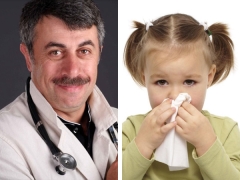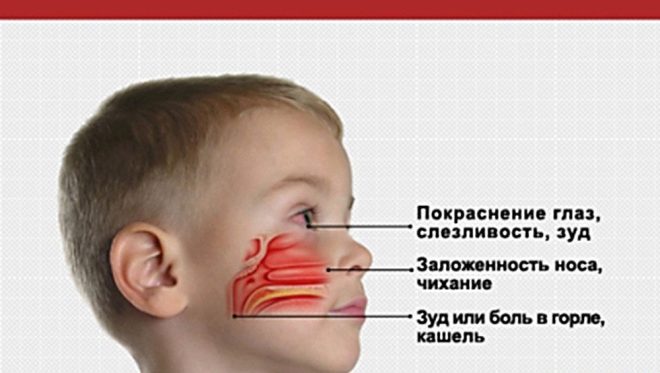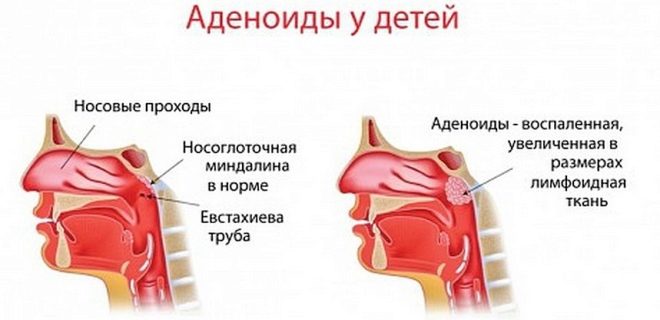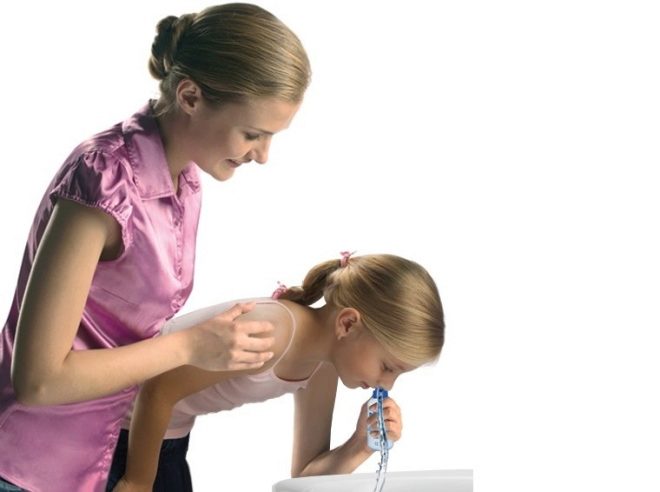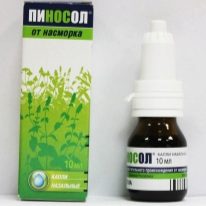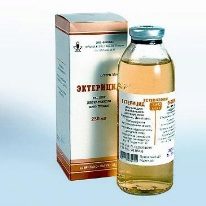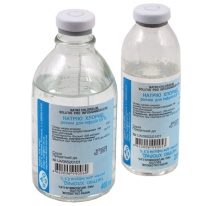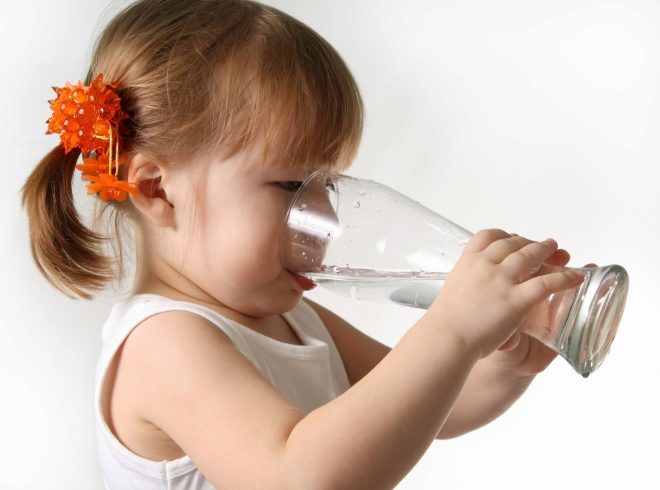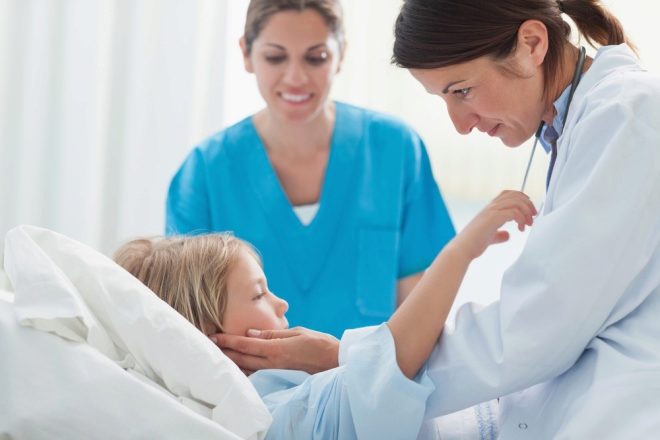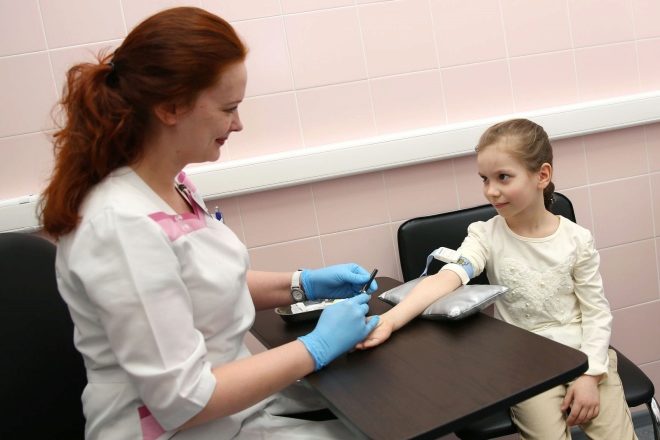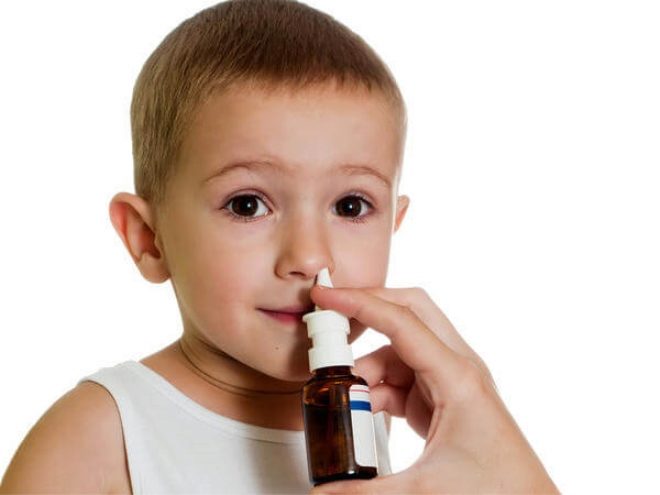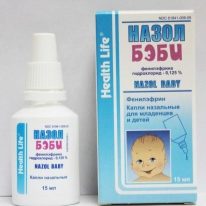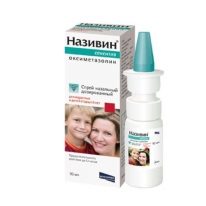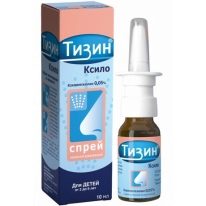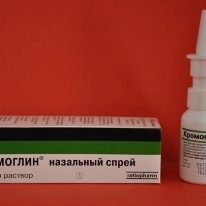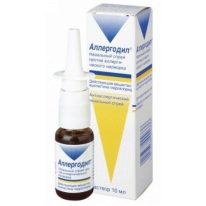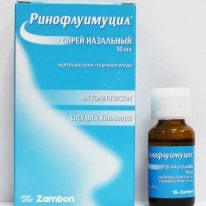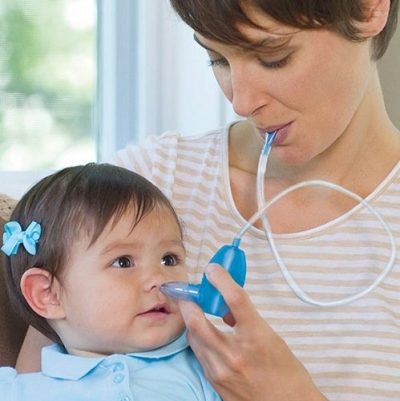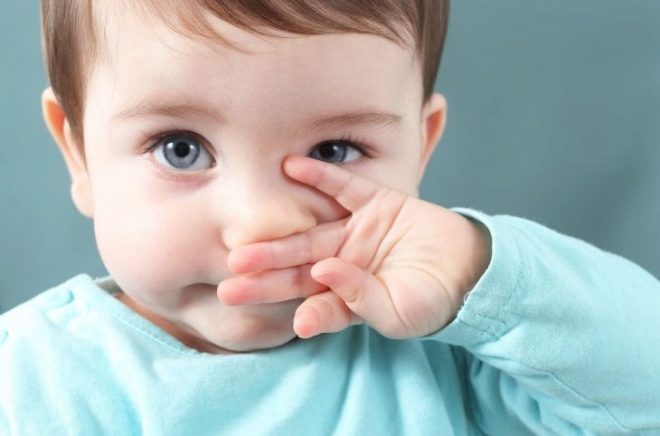Dr. Komarovsky on the treatment of rhinitis in a child
Runny nose - a frequent guest in families where children grow up. Everyone knows that self-illness nasal congestion it is not, it is only a symptom. Moreover, he can talk about a wide variety of diseases. However, in most families, moms and dads continue to treat the child with a cold. This therapy is sometimes long lasting. The well-known pediatrician Yevgeny Komarovsky tells about what a children’s rhinitis "signals" to adults, and what parents should do so that the child can breathe easily and simply.
About the problem
Even the most caring mother, who takes care of and protects the child from everything in the world, will not be able to ensure that the child has never caught a cold in her life. That's because most often rhinitis (the medical name for rhinitis) occurs with acute viral respiratory infections. At the physiological level, the following happens: one of the many viruses that always surround a child gets on the nasal mucosa. In response, the immunity gives the command to allocate as much mucus as possible, which should isolate the virus from other organs and systems and prevent it from moving further along the nasopharynx and larynx into the bronchi and lungs.
In addition to the viral form, which occupies about 90% of all cases of childhood cold, rhinitis can be bacterial, according to Yevgeny Komarovsky. When it is in the nasal cavity get bacteria. The body reacts similarly - enhanced mucus production. By itself, bacterial rhinitis is extremely rare, and its course is always very difficult. Bacteria (most often staphylococcus), cause severe inflammation, decay, and toxic products from vital activity - general intoxication.
Sometimes a bacterial cold can become after the child has had a viral infection. This is due to the fact that in the nasal passages the accumulated mucus becomes an excellent breeding ground for bacteria.
Usually these bacteria are harmless, they live in the nose and mouth on an ongoing basis and do not bother the child. However, in conditions of abundance of mucus, its stagnation, drying, microbes become pathogenic and begin to multiply rapidly. This usually happens when rhinitis is complicated.
The third, quite common cause of a cold in children is an allergy. Allergic rhinitis occurs as a reaction of local immunity to protein-antigen. If such a substance enters the body, the nasal mucosa reacts with edema, making it difficult for the child to breathe through the nose.
In some cases, nasal congestion and a violation of nasal breathing are associated with ENT diseases, such as adenoids. If the rhinitis is acute (appeared not earlier than 5 days ago), then there should not be any reasons for special unrest. In the case of prolonged snot in the presence of other symptoms, it is better to consult an otolaryngologist.
Treatment of viral rhinitis
Viral rhinitis is the most common among children and does not need treatment as such. The mucus, which is produced by the membranes of the nose, contains special substances that are very important for combating the virus that has penetrated the body. However, the beneficial properties of mucus will end immediately after the snot becomes thick. As long as they flow, everything is normal, parents can calm down.
But if suddenly the nasal mucus thickened, became green, yellow, yellow-green, purulent, purulent with blood, it ceases to be a "fighter" with the virus and becomes an excellent breeding ground for bacteria. This is the beginning of a bacterial cold, which will require treatment with antibiotics.
Thus, in case of viral rhinitis, the main task of parents is to prevent the mucus in the nose from drying out. The nozzles should remain fluid. That is why Yevgeny Komarovsky recommends not to look for pharmacy magic drops in the nose, because there are no drugs for viruses, but simply to rinse the child’s nasal cavity with saline solutions, and do it as often as possible (at least every half hour). To prepare the solution you need to take a teaspoon of salt per liter capacity of boiled chilled water. The resulting solution can be dripped, rinse the nose with a disposable syringe without a needle, sprinkle with a special bottle.
For instillation, you can use other tools that contribute to the dilution of nasal mucus - "Pinosol"," Ekteritsid ". Effectively dilutes the snot washing the most ordinary saline, which can be purchased cheaply at any pharmacy.
Drying nasal mucus, which is so necessary in the period of the body's fight against viruses, contributes to stuffiness and dry air in the room, the lack of a sufficient amount of fluid in the body. Therefore, the room where the child with a cold is located should be aired, wet cleaning should be done. Air must be moistened up to 50-70%. This will help parents special devices - humidifiers. If there is no such miracle of technology in the family, you can put basins of water in the corners of the room so that it can evaporate freely, put wet towels on the batteries and make sure that they do not dry out. A child who often suffers from rhinitis, be sure to give an aquarium with fish.
On the heating radiators in the room dad need to put special taps, valves, which can adjust the temperature of the air during the heating season. The air temperature in the nursery should be 18-20 degrees (year-round).
During the treatment of a viral infection, the child must drink. But not syrups and potions from the pharmacy, and tea, compote of dried fruit or fresh berries, fruit drinks, regular drinking water. Drinking regime should be abundant, all the drinking mother should give the child warm, but not hot, preferably at room temperature. Such drinking is absorbed faster in the body, and the likelihood of drying of the mucous membranes is significantly reduced.
If the child does not have a high temperature, he, in spite of the runny nose, must walk in the fresh air, breathe more. At this treatment of viral rhinitis and ends.
Treatment of a bacterial cold
If the snot changed color, consistency, became thick, green, purulent, you should definitely call a doctor. Bacterial infection is a serious matter, and airing is not enough here. In most cases, the child will need drops with antibiotics. But before the appointment, the doctor will definitely examine the prevalence of the inflammatory process and only then will decide the form in which antibiotics should be given to the child - in tablets (for extensive infection with additional symptoms) or in drops.
Komarovsky’s recommendations regarding air humidity, air temperature, wet cleaning, airing, and abundant warm drinking in the common cold caused by microbes also remain in force.
Treatment of allergic rhinitis
The best treatment for rhinitis caused by protein-antigens is getting rid of the source of these proteins. To do this, says Komarovsky, an allergist and pediatrician must try and find, with the help of tests and special tests, the same allergen that affects the child in this way. While doctors are looking for a reason, parents need to create the most secure conditions for the baby at home.
Be sure to remove from the nursery all carpets and soft toys that are dust accumulators and allergens. Indoors it is necessary to do wet cleaning more often, but without the use of chemicals, especially household chemicals, which contain a substance such as chlorine, should be avoided.
Wash baby’s clothes should be exclusively with baby powder, on the package of which there is an inscription “Hypoallergenic”, after washing all things and bed linen should be additionally rinsed in clean water. Parents should create adequate conditions indoors - air temperature (18-20 degrees), air humidity (50-70%).
If all these measures prove to be unsuccessful, and a runny nose does not pass, then the use of medicines may be required. Usually in this situation, nasal vasoconstrictor drops are prescribed.. They do not cure rhinitis of an allergic nature, but they provide temporary relief of the condition. Almost immediately after instillation, the vessels of the nasal mucosa become narrowed, the edema subsides, nasal breathing is restored.
These drops are in any home first-aid kit, and usually everyone has their names. With regard to children's treatment, it is "Nazol", "Nazivin", "Tizin", etc. However, these drops cannot be dripped for longer than 3-5 days (maximum 7 days, if the doctor insists on it), otherwise they will cause a persistent drug dependence in the child, in which, without drops, he will always experience difficulties with nasal breathing, and the nasal mucosa from constant use may atrophy. In addition, Komarovsky calls for the use of exclusively children's forms of drops, which differ from adults in reduced dosage. In addition, it should be remembered that many of these drugs are strictly contraindicated in children under two years of age. The list of side effects for vasoconstrictor drugs is also quite large.
For the treatment of allergic rhinitis often prescribed calcium gluconate in the age dosage, antihistamines, if the doctor deems it necessary. Children whose allergic rhinitis is chronic and prolonged in nature, exacerbations occur every season, antiallergic drugs for local use can be prescribed (Kromoglin, Allergodil, etc.). The drug proved to be quite effective. ”Rinofluimucil», Which is a combined agent, which includes hormones, and antiallergic components, and antibacterial agents.
If the child "sniffs" nose
Usually, parents immediately tend to the fact that the baby starts a cold and plan how to treat it and how. However, says Yevgeny Komarovsky, sniffing is not always a sign of illness.
If the child is upset, crying, and then sniffs for a long time, this is a normal physiological process in which the "excess" tears flow down the tear duct to the nose. There is nothing to treat and drip, it is enough to offer the child a handkerchief.
Runny nose in infants
Often parents ask how to treat a runny nose in newborns and babies. Yevgeny Komarovsky claims that such crumbs do not always require treatment as such. If mom thinks baby snoring or sniffles in a dream, it is not always rhinitis. In infants, the nasal passages are very narrow, which makes nasal breathing somewhat difficult. Such a state does not require any other assistance than creating the right indoor microclimate mentioned above. You can walk more often with your child.
If the nose does not breathe, breathes badly or mucous discharge has appeared, it should be remembered that it is the narrowness of the nasal passages in infants that makes it difficult for the mucus to flow, and therefore the risk of developing a bacterial infection in them is significantly higher than in older children. Blow your nose pussy does not know how. Parents will need to buy an aspirator and help the toddler free the nasal passages from the accumulated snot.Saline solutions can drip, water and moisten - too.
If a baby has white snot out of its nose, it is mucus mixed with milk or a mixture. This happens if the child burst out unsuccessfully (partially - in the nose). Treat in this situation, too, do not need anything. Remove white mucus, flush spout with saline.
Nasal congestion sometimes occurs and teething. In this situation, parents are also required to fulfill the necessary minimum for creating normal conditions. To drip and treat such a runny nose makes no sense, as soon as the teeth erupt, the swelling in the nasal passages will subside on its own.
Tips of Dr. Komarovsky
The longer the flu or ARVI is, the child with a stuffy nose breathes through the mouth, the higher the risk that not only mucous discharge in the nose will dry out, but also in the bronchi and lungs. To avoid bronchitis and pneumoniawhich are the most frequent complications of respiratory viral infections, be sure to moisturize and liquefy. All methods are described above.
If after the application of certain drops in the nose, the child sneezes, his eyes are watery, you should not blame these symptoms for an allergic reaction to the medicine. This is a normal manifestation of the immune fight against the virus, treatment should not be canceled.
Not always a runny nose looks classically. If a child’s snot does not flow out, but inside, along the back of the larynx, the disease will be called rhinopharyngitis. The doctor must treat it.
Any treatment with folk remedies can lead to serious complications, says Yevgeny Komarovsky. All recipes offered by traditional healers are aimed at eliminating the amount of mucus. In case of bacterial rhinitis, it is impossible to warm the nose, rinse it with warm solutions, make compresses and inhalation. In allergic rhinitis, especially of unclear etiology, most medicinal plants that use alternative medicine are dangerous for an allergic child by themselves.
How to treat a runny nose in children, see the transfer of Dr. Komarovsky.
